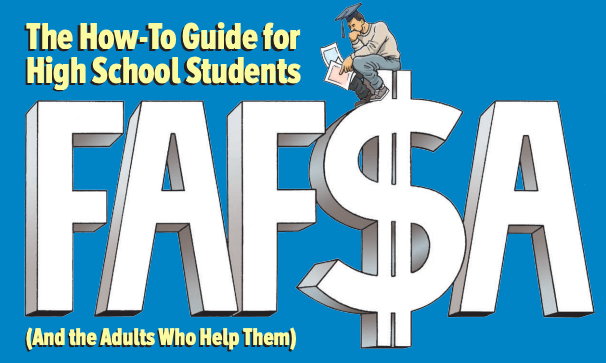
Center for New York City Affairs’ Understanding FAFSA Website and Guidebook Demystify the Application Process for High School Students
How do you increase college access for first-generation students? This question preoccupied Kim Nauer, program director at The New School’s Center for New York City Affairs (CNYCA), several years ago when she was working on an education policy report for the city of New York. She realized the way she could answer that question was to create a resource that would walk students through a vitally important part of the college application process: filling out the Free Application for Federal Student Aid (FAFSA) form. Nauer wrote FAFSA: The How-To Guide for High School Students (And the Adults Who Help Them), a guidebook outlining the steps of this complex application process.
The importance of the FAFSA cannot be overstated, as it is used by the federal government and many states and colleges to determine which students will get financial aid and how much they’ll receive. Grants, work study opportunities, and low-interest loans are all affected by FAFSA. “I wanted to create something that would be useful and practical for students,” says Nauer. “The first version of the booklet was short, just eight or ten pages, and basically explained what FAFSA is and why it asks you all of these personal questions. It has evolved into its current form, which is more well rounded and is a resource that can aid students during the entire college application process. The book walks students through the time in the fall when they complete the FAFSA form; winter, when colleges and FAFSA follow up with them to verify information; and spring, when they’re comparing college offers and deciding which is the best place for them.”
The guide grew out of a policy report, Creating College Ready Communities, which Nauer worked on years ago, toward the end of Mayor Mike Bloomberg’s administration. Within that paper were three pages that presented many students’ experiences with the FAFSA in their own words. “One of the fascinating things I remember in the report was that students’ discussions with their families opened up so many emotional issues. Some students would find out for the first time that they were undocumented; others had to beg their parents to see their tax return. After I created that piece, I wanted to try creating something directly for students as opposed to policymakers.” Although the book was produced by the CNYCA with the support of funders based in New York, it’s really a resource for any student anywhere who needs assistance.
“In many places, students are the ones often trying to complete the form by themselves. While they do have college access counselors in their schools, these workers are often overstretched. In addition, many parents are trusting that their kids can figure it out for themselves,” says Nauer. While the guide is written primarily for students, it also targets parents and guardians, as well as high school and college staff who may provide financial aid guidance to students.
The guide is now in its tenth edition, and Nauer recently launched a companion website, UnderstandingFAFSA.org. It has been translated and is now available in ten languages thanks to the help of the New York City Department of Education. The department printed and distributed the guide to all high school seniors and their family members prior to COVID-19, and continues to translate the guide and promote the new website.
“In the past, we have received requests for print copies from cities in the South, in Colorado, and Texas. The website now makes it easier to extend our reach across the country.” The website is just one tool Nauer is using to increase the impact of this resource. “I’ve started talking with some professors at Parsons about participatory design, where we would create something with the help of students. I’m also trying to increase the information we have for students who have very complex cases, like students who are experiencing homelessness, students in foster care, and students who are undocumented.
“College and financing college is something that every student can do,” adds Nauer. “It’s just a matter of understanding how to get through the hoops, and there are adults at the high school and college level who are there to help them. They just have to try, and will find out it’s easier than they think it is.”